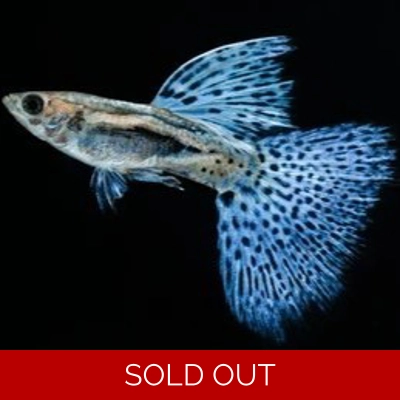Blue Grass Guppy
The Blue Grass Guppy (Poecilia reticulata) is highly sought after for several reasons:
Stunning Coloration: Their striking blue and green hues resemble patterns found in a grassy meadow, earning them the name “Blue Grass.” The calming blue color adds charm to any aquarium.
Easy Care: Blue Grass Guppies are relatively simple to care for. They thrive in freshwater aquariums with temperatures between 22-28°C and a pH of 6.8-7.8. Their omnivorous diet includes flake food, pellets, and live food.
Peaceful Nature: These guppies are peaceful and can coexist with other calm fish like tetras, platies, and mollies.
Breeding Potential: Their rapid growth make them ideal for breeding setups.
Here are 11 easy tips to make your guppies more vibrant and attractive:
- Feed High-Quality and Varied Diet:
- Reduce Stress:
- Ensure a stress-free environment by providing hiding places and avoiding overcrowding. Male guppies can stress out females, so consider a mixed-gender tank1.
- Maintain Ideal Water Parameters:
- Keep the water temperature between 72°F to 78°F (22°C to 25°C).
- Maintain a pH level of 7 to 7.2.
- Regularly test and adjust water parameters1.
- Good Water Quality Matters:
- Regular water changes and adding live plants help maintain water quality.
- Beneficial bacteria play a crucial role in reducing nitrate levels1.
- Ensure Sufficient Oxygen:
- Proper aeration keeps guppies healthy and enhances their colors.
- Keep Guppies in Groups:
- Guppies thrive when kept in schools.
- Avoid Aggressive Tankmates:
- Choose peaceful companions to prevent stress.
- Install Aquarium Lights:
- Specially designed lights can enhance coloration.
- Experiment with Substrate and Background:
- Different substrates and backgrounds can affect how guppy colors appear.
- Gentle Water Current:
- Avoid strong currents that stress guppies.
- Remember:
- Male guppies are brighter and more colorful than females.
- Coloration improves during mating periods.
- Juvenile guppies may not display full coloration until adulthood.
- Genetics also influence coloration






